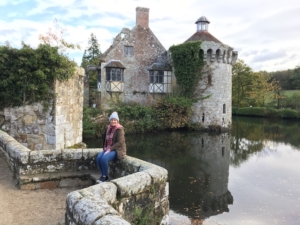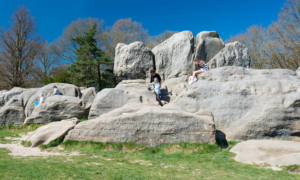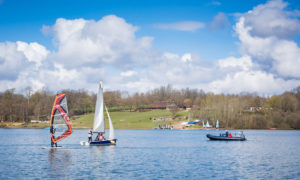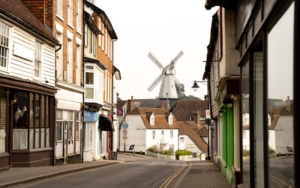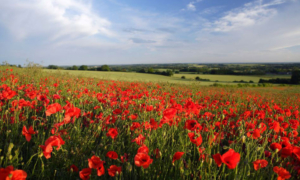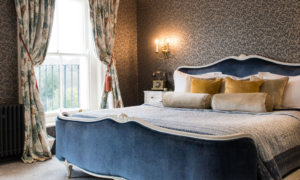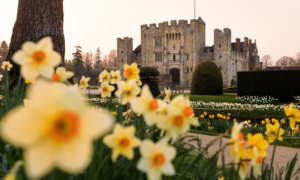Five green spaces to explore in Royal Tunbridge Wells.
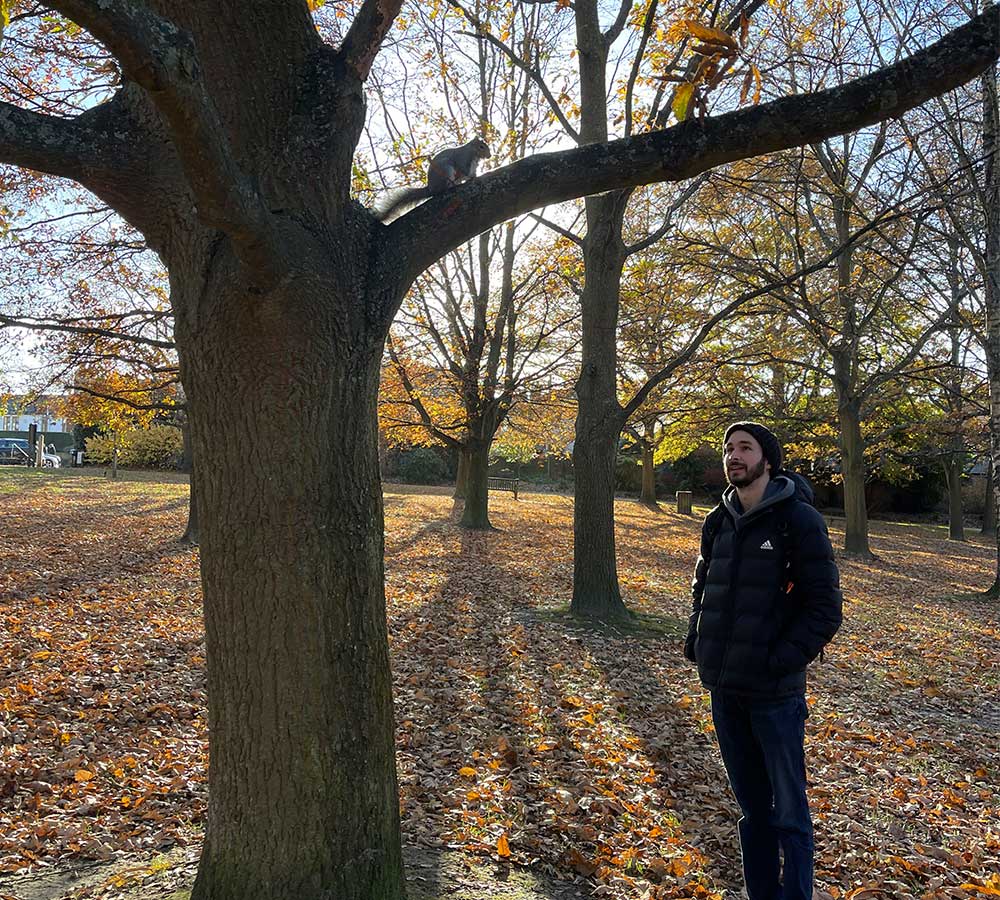
1. The Grove Park
Just off the High Street up Frog Lane, The Grove Park is a 1.9 hectare public space that was originally a small wood surrounded by open heathland. The Earl of Buckingham placed the woodland in trust in 1703 to be preserved forever for the benefit of the local residents. The park features a play area for children, grassy areas, benches, and surfaced paths suitable for visitors with pushchairs and/or wheelchairs. And keep your eyes peeled, for among the rustling leaves and flitting shadows, you’re sure to spot the multitude of squirrels that call The Grove their home. These bushy-tailed residents add a touch of playful charm to the park, often darting across paths or scampering up tree trunks with acrobatic grace.
2. Calverley Grounds
Calverley Grounds is a refined landscaped park of formal beds and lawns found right in the centre of Royal Tunbridge Wells. Dating from the 1830s, the grounds were originally part of the Decimus Burton development of Calverley New Town for private residents. You can imagine Victorian ladies and gentleman strolling through these pleasant gardens watching little ones roll balls and hoops down the slopes.
The grounds were only created into a public domain in the 1920s and are formed of the south-western slopes of the estate. The entire area is Grade 2 and 2* listed as a conservation area. The Hotel du Vin, previously the Calverley Hotel, has terraced gardens all of which are within the historic Calverley Estate envelope. The communal parkland used to be the leisure grounds of the Hotel as well as for the private homeowners.

At the north-west entrance to the Estate there is a grand, high, sandstone carriage archway with a lodge in each column either side of the carriageway. Here is a plaque celebrating Burton’s significant contribution to the area.
Today, the park is a treat and treasured by those who live and work around it. Workers stroll at lunchtime, sit and eat lunch. Families come to dawdle up and down the gentle slopes and picnic on the lawns. The new children’s adventure playground was installed during the summer of 2017 and is suitable for all abilities.Take a seat on the topmost part by the courts and you get a view over the Tunbridge Wells skyline and outlying countryside.
Visitors avail themselves of the cafés with snacks and drinks and admire the architecture of the beautiful surrounding villas and Italianate garden. There are 3 croquet lawns, and free tennis, netball and basketball courts.

3. Dunorlan Park
Just a 20-minute walk from the bustling centre of Royal Tunbridge Wells, everyone who visits Dunorlan Park is thrilled by the Park’s beauty and serenity.
The park is a popular place to unwind for romantic strolls and picnics as well as providing plenty of green space for families to play, feed the ducks, walk the dog, do Tai Chi, sketch…
Stop off at the lovely Dunorlan café for a quick bite to eat while you overlook the park.
Dunorlan Park is Grade II listed because part of it was landscaped in the 1860s by Richard Marnock, a prominent Victorian gardener, when it was the 78 acre gardens of the grand mansion built by Yorkshire millionaire, Henry Reed.
Discover other inspired historic features like the Grecian Temple, a Chalybeate Spring (the same waters as in the famous Pantiles) and the lavishly ornamental Fountain built to be in ‘harmony with nature’.
There are a variety of other things to see and do: the water garden, marshlands and outdoor activities such as pond dipping, dragonfly spotting, fishing, bird watching, tree trails and gardener walks. A picturesque boating lake invites paddleboat adventures (in Spring & Summer). There is a lovely terraced café nestled on a slight rise overlooking the lake.
“One of the best Parks I have visited in the past 60 plus years”
Come and experience it for yourself. ivydon on Tripadvisor has and felt moved to make the comment above!
4. Grosvenor & Hilbert Park
Grosvenor and Hilbert is one of the town’s oldest public parks designed by the renowned Victorian landscape architect Robert Marnock in 1889. It still contains original historic features, such as Marnock Lake and the grottoes or ‘dripping wells’.
Facilities at Grosvenor and Hilbert Park include: a large challenging play area, a café, an ornamental lake, a bowling green, a hireable community Hub, two full size grass football pitches, a kick around area marked for 5-a-side football and basketball, and public toilets. There is an exciting wheeled sports area located here too suitable for skateboards, BMX bikes and rollerblades.
The bowling green has been used by Grosvenor Bowls Club for over 100 years and is bookable in advance.
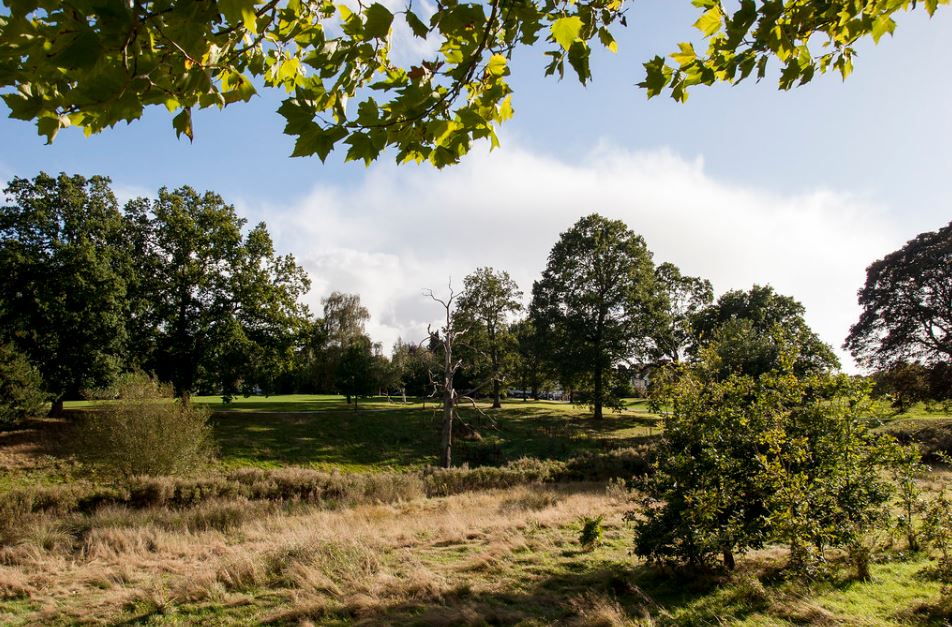
The park is home to a large variety of wildlife, which can be found within the wilder areas of the park, such as the Ancient Woodland, wetland area and community orchard. The wetland area now has a fantastic boardwalk through the middle, complete with dipping platforms. The community orchard comprises of 89 fruit trees and is managed by the Friends of Grosvenor and Hilbert Park. Hilbert Woods is designated a Local Nature Reserve and is managed by Kent High Weald Partnership. Chalybeate (iron-rich) streams run through the park, turning them an unusual rusty red colour. This is the same water that rises in the Pantiles and made Royal Tunbridge Wells famous.
The park can be accessed for free from several entrances, the main ones being from Auckland Road, Upper Grosvenor Road and Hilbert Road. It is just a short walk or cycle from both the town centre and High Brooms train station. It is also on the 281 bus route.

5. Woodbury Park Cemetery
Woodbury Park Cemetery is not a traditional park but a lovely place for a tranquil stroll. The Victorians called Woodbury Park Cemetery (opened in October 1849) a “Mortuary Garden” and today it is listed by English Heritage as a green and peaceful place. It has been a cemetery for 175 years with sculptured tombs, monuments and many unmarked graves.
The cemetery is used mainly by local residents as a place for observing nature. As a significant part of the town’s heritage the cemetery attracts visitors interested in local history. Visitors today will discover tombs commemorating many interesting characters from Tunbridge Wells’ and national history. These include Canon Edward Hoare, Vicar of Holy Trinity and ‘Protestant pontiff of Tunbridge Wells’, and William Law Pope, minister of King Charles’ Church, who created Brighton Lake (‘Pope’s Puddle’) as a project for the town’s unemployed.
Here too is the grave of local artist Charles Tattershall Dodd, along with his brother Joseph Josiah Dodd, the ‘black sheep of the family’ who painted around the world to escape the restrictions of mid-Victorian Tunbridge Wells. The family tomb of William Willicombe, the local architect and builder who continued Decimus Burton’s development of the Calverley Estate, has a fascinating reference to his son Clayton who died in the WildWest while ‘aiding the Sheriff in the execution of his duty’. Today you can visit the Fairmile restaurant which is located in his previous estate.
Discover the fascinating stories etched on the gravestones, some dating back to the 18th century. This serene escape offers a unique perspective on the town’s rich heritage.
Top Tip: The Park is especially resplendent during bluebells and daffodils season.
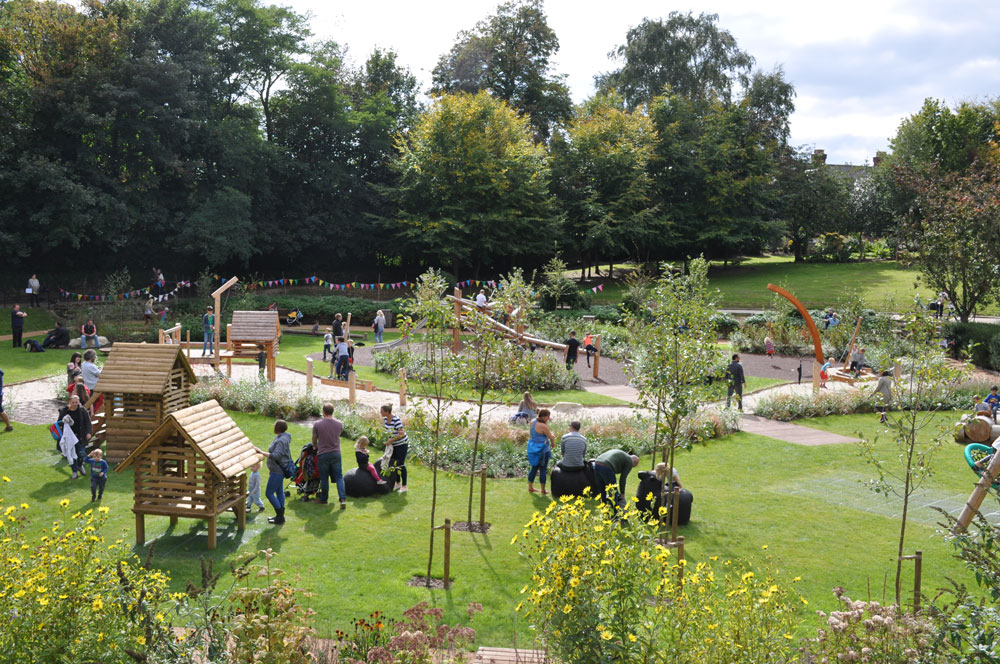
Play Areas
Adding to the verdant allure, Royal Tunbridge Wells’ parks cater to playful adventures. Grosvenor & Hilbert Park’s expansive play area keeps children of all ages entertained, while Calverley Grounds offers a charming, nature-inspired playground nestled amidst the park’s greenery. Adventurous spirits can find their fix at Hawkenbury Park’s spacious playground, complete with climbing frames, slides, and swings.




